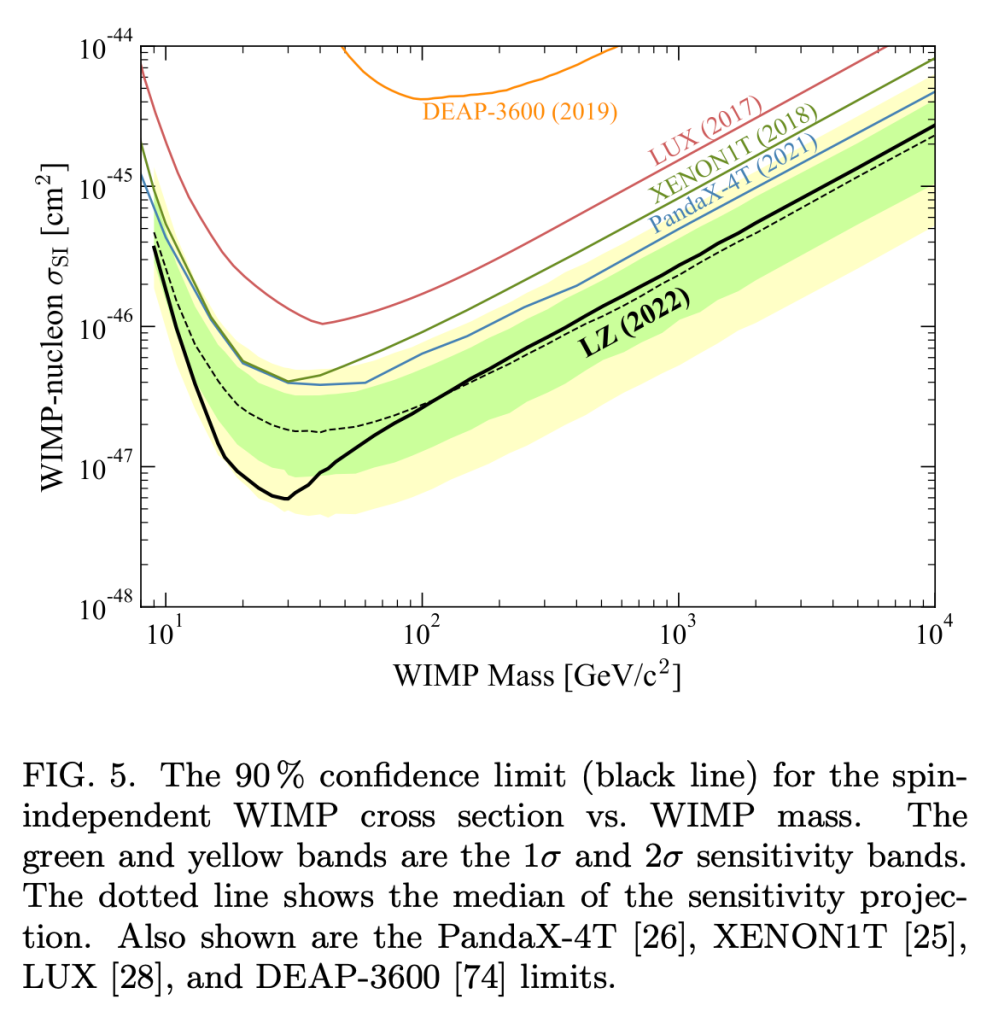
Just as I was leaving for a week’s vacation, the dark matter search experiment LZ reported its first results. Now that I’m back, I see that I didn’t miss anything. Here is their figure of merit: LZ is a merger of two previous experiments compelled to grow still bigger in the never-ending search for dark matter.








